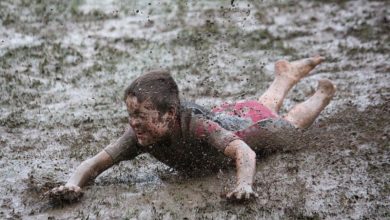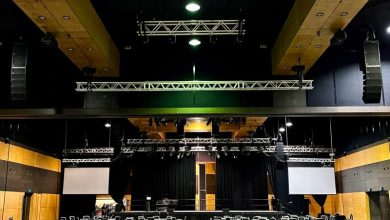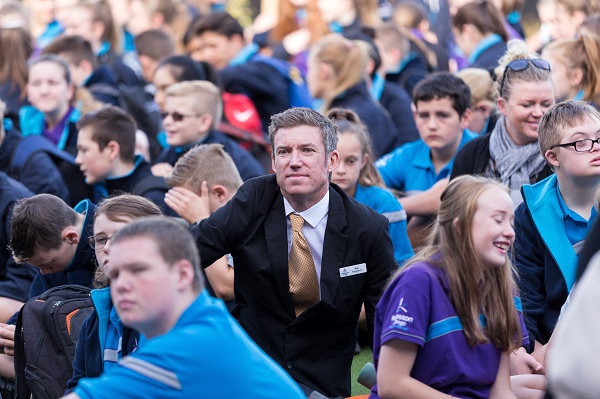
Steve Saville had some lonely days when he took up the post of principal at the country’s newest high school, Rolleston College. As the first employee of a school yet to be built, staffed or populated, he spent months working in a motel room with just a phone and laptop for company.
Eighteen months on, Mr Saville can barely complete an email or finish a sentence without someone popping in to see him. Rolleston College is five months old – and it’s buzzing with life.
It’s the first state high school to open in Canterbury in more than 30 years, a response to the rapid population growth in the town of Rolleston, 28km south west of Christchurch. Previously best-known for its prison, Rolleston has in recent years expanded so quickly that the council no longer publishes road maps but instead distributes A3-size updates with new streets and facilities. The town’s population, currently at 16,000 and expected to keep rising, is very youthful – the percentage of under-15s is five per cent higher than nationally, while the number of over-65s is half the usual number.
During the past few years, three primary schools have opened in the area and now, at last, Rolleston has its own high school. And what a school it is. When the 200 foundation students arrived for their first day in January this year, they took their place in the history books. Rolleston College is a school of few walls and built around a high trust model where students can manage aspects of their own learning programmes, and the use of laptops and smartphones is expected.
For Mr Saville, the best part of the job is that he is the school’s “educational leader” and has no obligation to be involved in property management. This is because the school has been designed and built by a Public Private Partnership (PPP), an agreement between the Ministry of Education (MoE) and a consortium of private companies.
“The functioning of the building, the cleaners, the caretakers and five-year plan are nothing to do with me which is fantastic,” says Mr Saville. “I get to walk around and visit the kids regularly, and be in education as if I was a traditional teacher.”
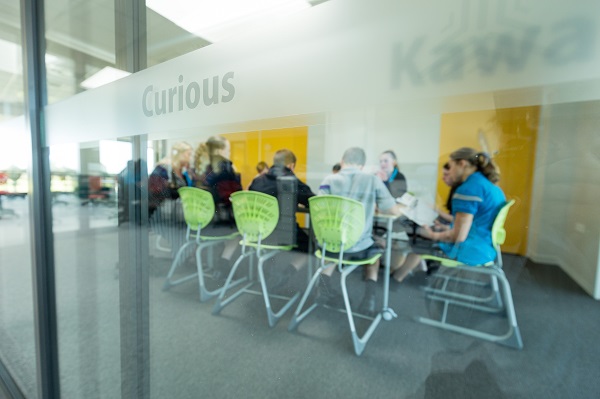
He did, however, check in with the construction team from time to time to ensure that the school would be functional for its innovative learning model. Pillars are peppered with charging ports because “teenagers are reluctant to be separated from their device by more than a millimetre”.
Facilities are enviable, and include a 500-seat theatre, a multi-purpose gym, an automotive workshop, and dance and music studios.
Mr Saville also had to establish the school’s teaching team, interviewing candidates for more than 26 positions. “I was looking for teachers with a growth mindset who were concerned about the learner rather than the process. Obviously, we had to have our learning areas covered, but we made sure we gave Canterbury teachers the first bite of the cherry. We wanted to draw on local knowledge and people committed to the region.”
The staff line-up includes 21 Cantabrians, and all teachers share the school’s vision of enabling every learner to succeed as the individual person they are, regardless of gender, nationality or ethnicity.
The community gets and supports the philosophy and vision of the school but they have questions because it’s a lot of new things to take in that they don’t instantly recognise,”
Then there is the structure of the school day. Students have three lessons a day, each for 100 minutes, interspersed with breaks. “We keep the structure simple so the learning can be deep. As soon as you break, the students lose concentration and you’re losing time walking around the school.” Lessons are divided into sessions of small group work with an ako coach, mentoring and reflection, a teaching style that personalises while remaining inclusive, says Mr Saville. “Teachers have the chance to take remedial learners away for extension without having to categorise them.”
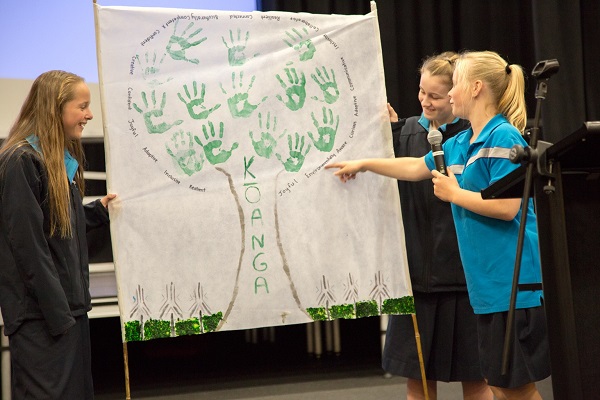
The innovative learning style is supported by the ultra-modern design of the buildings and “phenomenal” acoustics. “Problems predicted such as noise issues and students being distracted by other learners just haven’t happened. I can observe three different classes working and not impacting on each other.” It helps, too, that most students have come from local primaries using modern and inclusive models.
The curriculum is delivered in three parts: Ako, that includes a personal project, a reading programme for literacy and mentoring, an integrated learning of English, maths, science and social science delivered around a context by a team of teachers, and selected optional subjects – students choose from a range of arts, technology, languages and extension options.
The curriculum delivery has aroused considerable interest. “The community gets and supports the philosophy and vision of the school but they have questions because it’s a lot of new things to take in that they don’t instantly recognise,” says Mr Saville. “They’re still asking questions as they come to terms with a more integrated approach where subjects are not delivered as separate entities.
In higher decile schools, parents know what questions to ask and they’ll ask them. It’s all about context and community, you are serving your community.
Happily, students’ results are exceeding expectations. “The learning vehicle working best is the student-personalised one where they manage their own learning. The work being produced is of a far higher quality than we might have expected.”
It’s been a sharp learning curve for all teaching staff. “Teaching in an open learning space requires some risk taking,” says Mr Saville. “We don’t have classrooms isolating teachers, so your teaching is very transparent. They’re doing everything for the first time so they’re working very hard and they’re reflecting a lot. We’re trying to capture and encourage that, and we’re trying to cut down on meetings. If you’re working in a team, you’re having planning meetings during the lesson.
“Students are seeing teachers talking and collaborating so they’re are seeing how adults function. It does have to be managed and we have to be aware of what’s working and what’s not managed.”
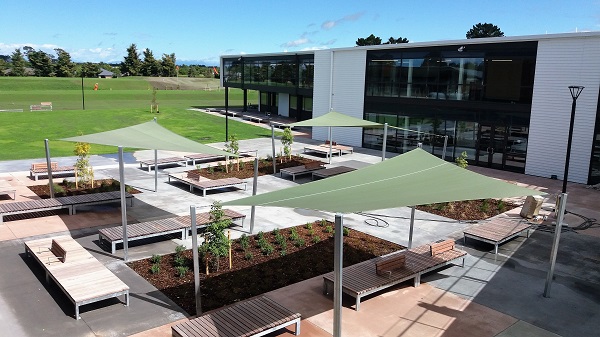
Shiny Rolleston College with its mostly European students might seem a world away from Mr Saville’s last post, deputy principal at decile two Alfriston College in South Auckland, but “kids are kids”, he says. “Alfriston would have a larger group from a lower socio economic background, but the range is the same, there’s just more at one end than the other. Alfriston was very multicultural so that’s a big change. (Population in the Selwyn district where Rolleston is located is 91 per cent European.) Expectations are not different, it’s the knowledge of how to achieve those expectations that is different here. Families that have gone through university and have jobs understand the system, how it works and how to access it better. They have more access to technology and to experiences but the want and desire is the same. In higher decile schools, parents know what questions to ask and they’ll ask them. It’s all about context and community, you are serving your community.”
The school includes a satellite unit from Waitaha Special School, and Mr Saville counts the integration of these students as one of Rolleston’s great successes. “We said from day one that the presence of Waitaha students would be normalised into the school and I get a little buzz when I see them around because they are not secluded or isolated in any sense, they are fully integrated.”
At the time of this interview, Rolleston College was nine weeks into its first term, and Mr Saville reflected on his journey from those early days alone in a motel room.
“It’s been a huge learning curve and challenge. We’ve had to make decisions about everything from the school logo and uniform to the interview process. There were no learning programmes as such, no policies or procedures, and everything is very, very time consuming. I was hugely appreciative of the work already done by the Establishment Board of Trustees.”
If you thought about everything that had to be done it would become daunting so we focused on one step at a time. And every time we start to think it’s overwhelming, I then think what a privilege it is – and I think the staff feel that as well.”





